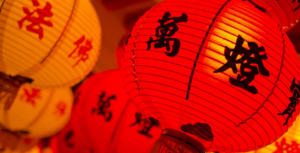Brand Identity Package Guide – 4 Best Brand Identity Design Tips
Are you wondering what comes inside a brand identity package? If so, this guide is for you. We are going to be sharing what comes inside your brand identity package as a brand designer. Every single brand designer does offer different packages and therefore can offer different deliverables, but the things we are sharing are bare minimum deliverables as a brand designer that we believe every brand needs to show up online and be successful.

1. Brand Strategy
First and foremost, the thing that all brand identity packages include which is an absolute must is some brand strategy. Brand strategy means the research we conduct the target audience analysis and the overall approach you have as the client’s designer based on the things that they’ve told and the things that we have discussed during our call that make their brand unique and stand out in the market. But a few things that are also included in the strategy portion of brand identity packages include coming up with a brand mission statement for clients, discovering their brand values, and creating a brand tagline. Not every client needs all those things because there are some people who already have those things figured out and in place. If your clients do not have those things, you will work to develop them for the clients’ brands.
2. Logos
After we get past the non-visual things, we step into the visual side of the brand identity package which includes a primary logo, a secondary logo, and usually anywhere between three and four brand marks.
– The primary logo is the thing that is typically seen and associated with the client’s brand. It’s also used on their website and in other prominent places.
– The secondary logo is usually a condensed version of the primary logo and can be used in places in which your client’s primary logo may just be too large to fit.
– The brand marks serve as other variations of clients’ primary and secondary logos that still reflect clients’ brands, but are typically smaller simplified designs that are sometimes a bit more abstract. These can be used on social media in the circular profile photo areas, as well as in the footer of websites and all sorts of other unique places like that. They can even sometimes be used as stickers or other various little merchandise items depending on the client.
3. Custom Brand Pattern
In addition to those things, clients also receive a custom brand pattern in various colors. Brand patterns are absolutely gorgeous and most brands should have them. They can be used on your website they can be used on tissue paper they can be used on your box packaging, and they’re just a really fun beautiful unique touch to every brand identity. All the visual elements will get delivered to the client in various file formats and come in all sorts of different colors. So that they have everything they need to show up online and in-person cohesively and consistently as a brand. Of course, brand identity wouldn’t be complete without the actual color palette and color codes and the font system, meaning all the topography and fonts and typefaces that clients’ brand identity requires.
4. Highlight Covers
A few other things the brand identity package includes are reusable, social media posts, and highlight covers for Instagram, Facebook banners, and a few things like that for social media. Because in order for a brand to show up online cohesively, they have to have branded materials for social media and places in which it’s going to be marketing its business. Lastly, your clients will receive all of their brand files included in their package, and that is basically the bare minimum of what the package comes with by default.
That being said, a lot of clients sometimes want to switch out Instagram highlight covers for business cards or add additional brand collateral items to their packages like brochures or label designs, or package designs. It really all depends on the client you are working with, where they show up, and what they need to show up cohesively and consistently in that space.


Top 10 Creative Cosmetic Packaging Design Ideas & illustrations 2023 | Luxury-Paper-Box.Com

10 Customs Of The Spring Festival (Lunar New Year) You Need To Know

Top 10 Best Lattafa Perfumes for Women & Men in 2024

Top 10 Best Packaging Design Software 2023 (Free & Paid)

Best Chocolate Packaging Designs of 2025

Natural Concept Perfume Design Ideas: Tell Your Brand Story



 kali@luxury-paper-box.com
kali@luxury-paper-box.com



